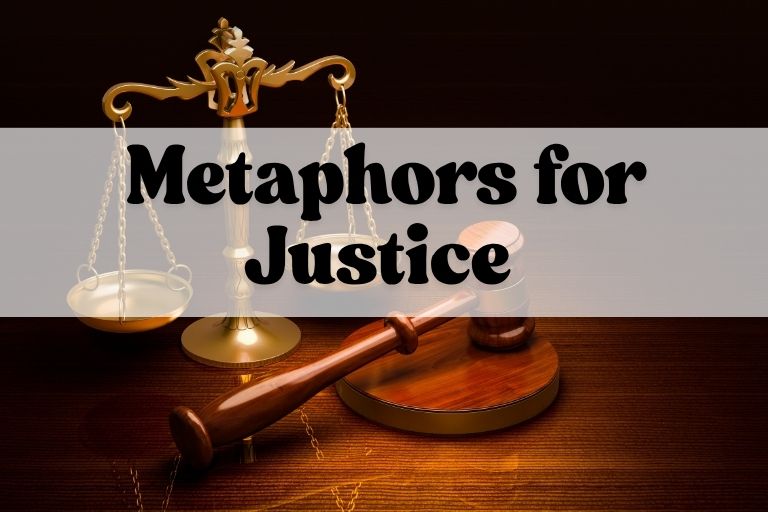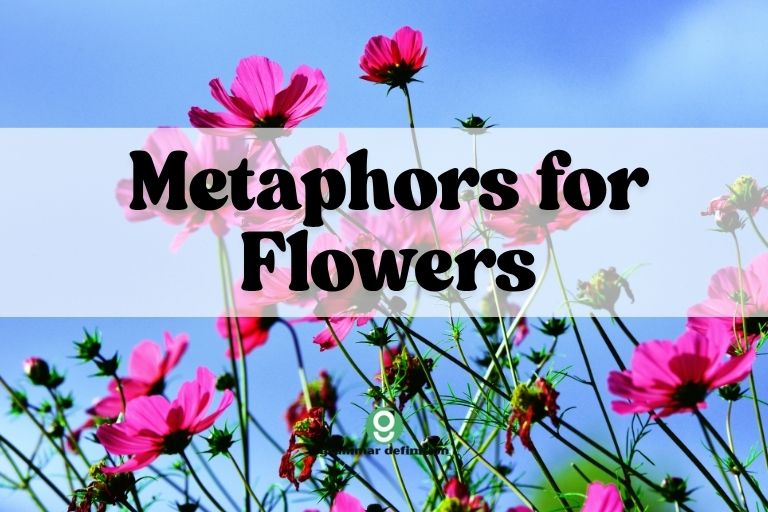Metaphors for Transformation: A Grammar Guide

Metaphors are powerful tools in the English language, allowing us to understand abstract concepts and complex ideas by relating them to more concrete and familiar things. The concept of “transformation,” which involves significant change and development, is often conveyed through vivid and evocative metaphors.
Understanding these metaphors not only enriches our comprehension of the English language but also enhances our ability to express complex ideas in a creative and impactful way. This article will explore the grammar of metaphors for transformation, providing a comprehensive guide suitable for learners of all levels, from beginners to advanced speakers.
By understanding how these metaphors function, you can elevate your writing and speaking skills, adding depth and nuance to your communication.
Table of Contents
- Introduction
- Definition of Metaphors for Transformation
- Structural Breakdown
- Types and Categories of Transformation Metaphors
- Examples of Metaphors for Transformation
- Usage Rules for Transformation Metaphors
- Common Mistakes
- Practice Exercises
- Advanced Topics
- FAQ
- Conclusion
Definition of Metaphors for Transformation
A metaphor is a figure of speech that directly compares two unrelated things, asserting that one is the other, or that one possesses a quality of the other. Unlike similes, which use “like” or “as” to make a comparison, metaphors imply a direct equivalence. Metaphors for transformation specifically describe a process or state of change using these figurative comparisons. They help us understand abstract or complex changes by relating them to more concrete and understandable concepts.
In the context of grammar, metaphors for transformation often involve using verbs, nouns, and adjectives in a way that transcends their literal meaning. For example, the verb “blossom” literally refers to the opening of a flower, but metaphorically, it can describe a person’s growth and development.
These metaphors function by creating a new, figurative meaning through association and implication. They allow for a richer, more vivid depiction of change than literal language could provide.
Metaphors for transformation are crucial in literature, poetry, and everyday communication. They allow writers and speakers to convey deep meaning and evoke strong emotions.
By understanding how these metaphors work grammatically and conceptually, we can better appreciate and utilize the power of figurative language.
Structural Breakdown
The structure of a metaphor for transformation typically involves two key elements: the tenor and the vehicle. The tenor is the subject or concept being described (the thing undergoing transformation), while the vehicle is the thing to which it is being compared (the source of the metaphorical meaning).
Consider the sentence: “He emerged from the crisis a stronger person.” Here, the tenor is “he” (the person undergoing transformation), and the vehicle is the idea of emerging from a dark or difficult place. The verb “emerged” is the key element that links the tenor and the vehicle, creating the metaphorical meaning.
The grammatical structure can vary. The metaphor can be expressed through:
- Verbs: blossom, evolve, morph, transform, break
- Nouns: cocoon, chrysalis, phoenix, turning point
- Adjectives: transformed, renewed, reborn, evolved
The effectiveness of a metaphor depends on the relationship between the tenor and the vehicle being clear and resonant. The vehicle should provide a vivid and understandable image that sheds light on the tenor.
The grammatical structure should support this relationship, creating a seamless and impactful metaphorical expression.
Types and Categories of Transformation Metaphors
Metaphors for transformation can be categorized based on the specific type of change they represent and the imagery they evoke. Here are some common categories:
Metamorphosis
Metamorphosis metaphors draw on the biological process of transformation, particularly the changes that insects undergo, such as a caterpillar becoming a butterfly. This category emphasizes a complete and dramatic change in form or nature.
These metaphors often involve a shedding of the old and an emergence of the new.
Journey
Journey metaphors depict transformation as a process of movement and progress from one point to another. This category emphasizes the challenges, obstacles, and discoveries encountered along the way.
The journey can be physical, emotional, or spiritual, and the destination often represents a new state of being.
Growth and Cultivation
Growth and cultivation metaphors compare transformation to the natural process of plants growing. This category emphasizes gradual development, nurturing, and the importance of favorable conditions.
These metaphors often involve images of seeds, roots, and blossoming.
Construction and Destruction
Construction and destruction metaphors depict transformation as a process of building up or tearing down. This category emphasizes the creation of something new from the remnants of the old.
These metaphors often involve images of building, demolition, and reconstruction.
Alchemy and Refinement
Alchemy metaphors draw on the historical practice of alchemy, which sought to transform base metals into gold. This category emphasizes purification, refinement, and the transmutation of something ordinary into something extraordinary.
These metaphors often involve images of fire, cauldrons, and precious metals.
Examples of Metaphors for Transformation
The following tables provide examples of metaphors for transformation, categorized by the types discussed above. Each example illustrates how the tenor and vehicle work together to create a figurative meaning.
Metamorphosis Examples
This table illustrates how metamorphosis metaphors are used to describe profound changes.
| Sentence | Tenor | Vehicle | Explanation |
|---|---|---|---|
| She emerged from the training program a completely different person. | She (person) | Emerging (like a butterfly from a chrysalis) | The training program caused a significant change in her personality and skills. |
| His anger metamorphosed into understanding. | Anger | Metamorphosis (caterpillar to butterfly) | His anger underwent a complete and dramatic change into understanding. |
| The company shed its old image and adopted a modern approach. | Company | Shedding (skin or shell) | The company discarded its outdated image for a newer, more contemporary one. |
| He felt like a butterfly emerging from a long, dark cocoon. | He (person) | Butterfly emerging from a cocoon | He experienced a significant and positive transformation after a difficult period. |
| The project morphed from a small idea into a major initiative. | Project | Morphing (changing shape) | The project underwent a gradual but significant transformation in scope and scale. |
| After years of hardship, she blossomed into a confident leader. | She (person) | Blossoming (flower opening) | After overcoming many challenges, she developed into a strong and capable leader. |
| The internet revolutionized communication, transforming society in profound ways. | Communication | Revolutionizing (complete change) | The internet brought about a fundamental and far-reaching change in how people communicate. |
| The old building was reborn as a modern art gallery. | Building | Reborn (new life) | The building was renovated and transformed into a new and vibrant space. |
| His near-death experience transformed his perspective on life. | Perspective | Transformation (complete change) | The experience caused a fundamental shift in his values and priorities. |
| The caterpillar of self-doubt transformed into the butterfly of self-assurance. | Self-doubt | Caterpillar transforming into a butterfly | The person overcame self-doubt and gained confidence. |
| The city molted its industrial past and embraced a future in technology. | City | Molting (shedding skin) | The city moved away from its industrial roots and shifted its focus to technology. |
| Her fear dissolved into courage as she faced the challenge. | Fear | Dissolving (disappearing) | Her fear disappeared, replaced by courage. |
| The political landscape has shifted dramatically in recent years. | Political landscape | Shifting (changing position) | The political situation has undergone significant changes. |
| The company reinvented itself to stay competitive in the market. | Company | Reinventing (creating anew) | The company changed its strategies and operations to remain successful. |
| The student flowered under the guidance of her mentor. | Student | Flowering (blooming) | The student thrived and developed under her mentor’s support. |
| The project crystallized from a vague idea into a concrete plan. | Project | Crystallizing (becoming clear) | The project became well-defined and clear. |
| She graduated from being a novice to an expert in the field. | She (person) | Graduating (advancing to a higher level) | She moved from being a beginner to an expert. |
| His attitude evolved from skepticism to acceptance. | Attitude | Evolving (developing gradually) | His attitude gradually changed from doubt to acceptance. |
| The software transformed the way businesses operate. | Software | Transforming (changing completely) | The software brought about a fundamental change in business operations. |
| The seed of an idea sprouted into a successful company. | Idea | Sprouting (beginning to grow) | The idea started to develop and grow into a thriving company. |
Journey Examples
This table illustrates how journey metaphors are used to describe a process of change and progress.
| Sentence | Tenor | Vehicle | Explanation |
|---|---|---|---|
| Life is a winding road filled with unexpected turns. | Life | Winding road | Life is a journey with unpredictable events and challenges. |
| He navigated the challenges of the project with skill and determination. | He (person) | Navigating (steering a ship) | He skillfully overcame the obstacles in the project. |
| The company is charting a new course in the market. | Company | Charting a new course | The company is adopting a new strategy and direction. |
| The training program was a pathway to a better career. | Training program | Pathway | The training program provided a route to career advancement. |
| She is on a journey of self-discovery. | She (person) | Journey | She is exploring her identity and values. |
| The project is moving forward despite the setbacks. | Project | Moving forward | The project is progressing despite the challenges. |
| He had to overcome many obstacles to achieve his goals. | He (person) | Overcoming (surmounting a barrier) | He successfully dealt with the difficulties he faced. |
| The company is paving the way for future innovations. | Company | Paving the way | The company is creating opportunities for future advancements. |
| His career took off after the successful project. | Career | Taking off (airplane) | His career advanced rapidly after the project’s success. |
| The negotiations stalled despite efforts to reach an agreement. | Negotiations | Stalling (vehicle stopping) | The negotiations stopped progressing. |
| She is climbing the ladder of success in her field. | She (person) | Climbing the ladder | She is progressing in her career. |
| The project ran into unexpected difficulties. | Project | Running into (encountering) | The project encountered unforeseen problems. |
| The company is navigating through a period of economic uncertainty. | Company | Navigating (steering a ship) | The company is managing its way through a difficult economic situation. |
| His life veered off course after the accident. | Life | Veering off course | His life took an unexpected and unfavorable turn. |
| The company reached a turning point in its history. | Company | Turning point | The company arrived at a critical moment in its development. |
| The project is on track to meet its goals. | Project | On track | The project is progressing as planned. |
| She is making strides in her career. | She (person) | Making strides | She is making significant progress in her career. |
| The company is exploring new avenues for growth. | Company | Exploring new avenues | The company is looking for new opportunities to expand. |
| He is embarking on a new chapter in his life. | He (person) | Embarking on (starting a journey) | He is beginning a new phase in his life. |
| The research led to a breakthrough discovery. | Research | Led to (guiding) | The research resulted in a significant discovery. |
Growth and Cultivation Examples
This table illustrates how growth and cultivation metaphors are used to describe gradual development and nurturing.
| Sentence | Tenor | Vehicle | Explanation |
|---|---|---|---|
| Her talent blossomed with the encouragement of her teacher. | Talent | Blossoming (flower opening) | Her talent developed beautifully with support. |
| The idea took root and grew into a successful business. | Idea | Taking root (plant growing) | The idea started to develop and became a thriving business. |
| The company cultivated a strong relationship with its customers. | Company | Cultivating (tending to plants) | The company nurtured and developed a good relationship. |
| His skills flourished in the new environment. | Skills | Flourishing (plant thriving) | His skills developed and thrived in the new environment. |
| The organization nurtured young talent and helped them grow. | Organization | Nurturing (caring for plants) | The organization supported and developed young talent. |
| The project grew from a small initiative into a major undertaking. | Project | Growing (plant increasing in size) | The project expanded from a small start to a large project. |
| She planted the seeds of change in the community. | She (person) | Planting seeds | She initiated actions that would lead to change. |
| The company harvested the benefits of its investments. | Company | Harvesting (collecting crops) | The company reaped the rewards of its investments. |
| His ideas sprouted and grew into innovative solutions. | Ideas | Sprouting (beginning to grow) | His ideas started to develop and became innovative solutions. |
| The relationship withered due to neglect. | Relationship | Withering (plant dying) | The relationship deteriorated due to lack of care. |
| He tended to his responsibilities with care and dedication. | He (person) | Tending (caring for plants) | He took care of his duties with diligence. |
| The project bore fruit after years of hard work. | Project | Bearing fruit | The project produced positive results after much effort. |
| The company cultivated a culture of innovation. | Company | Cultivating (tending to plants) | The company fostered an environment that encouraged innovation. |
| His potential budded early in his career. | Potential | Budding (plant starting to blossom) | His potential began to show early in his career. |
| The program fostered a sense of community among the participants. | Program | Fostering (nurturing growth) | The program encouraged and developed a sense of community. |
| The initiative took root in the community and began to thrive. | Initiative | Taking root (plant growing) | The initiative started to gain support and grow in the community. |
| She watered her knowledge by reading and studying. | She (person) | Watering (giving water to plants) | She nourished her knowledge through reading and study. |
| The company reaped the rewards of its investments in research and development. | Company | Reaping (harvesting crops) | The company benefited from its investments. |
| His career blossomed after he took on new challenges. | Career | Blossoming (flower opening) | His career developed and thrived. |
| The garden of our friendship flourished over the years. | Friendship | Flourishing (plant thriving) | Our friendship grew stronger over time. |
Construction and Destruction Examples
This table illustrates how construction and destruction metaphors are used to describe transformation through building and tearing down.
| Sentence | Tenor | Vehicle | Explanation |
|---|---|---|---|
| The old system collapsed under the weight of its inefficiencies. | System | Collapsing (building falling) | The system failed due to its problems. |
| He rebuilt his life after the divorce. | Life | Rebuilding (constructing again) | He started over and created a new life. |
| The company restructured its operations to improve efficiency. | Company | Restructuring (rebuilding) | The company reorganized to become more efficient. |
| The scandal demolished his reputation. | Reputation | Demolishing (destroying) | The scandal ruined his reputation. |
| She built a successful career from the ground up. | Career | Building (constructing) | She created a successful career through hard work. |
| The project fell apart due to lack of funding. | Project | Falling apart (structure collapsing) | The project failed because of financial problems. |
| He constructed a new identity after leaving his old life behind. | Identity | Constructing (building) | He created a new sense of self. |
| The earthquake shattered the city’s infrastructure. | Infrastructure | Shattering (breaking into pieces) | The earthquake destroyed the city’s infrastructure. |
| The company laid the foundation for future growth. | Company | Laying the foundation | The company established the groundwork for future expansion. |
| His dreams crumbled after the failure of the business. | Dreams | Crumbling (falling apart) | His dreams were destroyed because the business failed. |
| She erected a wall of defense against criticism. | She (person) | Erecting (building) | She created a barrier to protect herself from criticism. |
| The old traditions were dismantled to make way for new ones. | Traditions | Dismantling (taking apart) | The old traditions were removed to allow for new ones. |
| The team rebuilt its strategy after the initial setback. | Team | Rebuilding (constructing again) | The team revised its strategy after the initial failure. |
| The political system disintegrated due to corruption. | Political system | Disintegrating (falling apart) | The political system collapsed due to corruption. |
| He built bridges between different communities. | He (person) | Building bridges | He fostered understanding and cooperation between communities. |
| The project fell to pieces due to poor management. | Project | Falling to pieces | The project failed because of bad management. |
| The company constructed a strong brand identity over time. | Company | Constructing (building) | The company developed a recognizable brand. |
| The storm wreaked havoc on the coastal town. | Storm | Wreaking havoc (destroying) | The storm caused widespread destruction in the town. |
| He laid the groundwork for a successful future. | He (person) | Laying the groundwork | He prepared the foundation for success. |
| The treaty broke down due to disagreements between the parties. | Treaty | Breaking down (collapsing) | The treaty failed because of conflicts. |
Alchemy Examples
This table illustrates how alchemy metaphors are used to describe transformation through purification and refinement.
| Sentence | Tenor | Vehicle | Explanation |
|---|---|---|---|
| The crisis transformed him, like turning lead into gold. | Him (person) | Turning lead into gold | The crisis caused a positive and significant change in him. |
| She refined her skills through years of practice. | Skills | Refining (purifying) | She improved her skills through dedicated practice. |
| The company is transmuting its business model to adapt to the changing market. | Company | Transmuting (changing form) | The company is adapting its business model to the market. |
| He purified his intentions and focused on helping others. | Intentions | Purifying (removing impurities) | He cleared his intentions and helped others. |
| The experience distilled his wisdom, making him a better leader. | Wisdom | Distilling (purifying liquid) | The experience enhanced his wisdom. |
| The artist transmuted his pain into beautiful art. | Pain | Transmuting (changing form) | The artist transformed his pain into art. |
| She filtered out the negativity and focused on the positive aspects. | Negativity | Filtering out (removing impurities) | She eliminated negativity and focused on positivity. |
| The company transformed its waste into valuable resources. | Waste | Transforming (changing form) | The company converted its waste into resources. |
| He refined his approach until it was perfect. | Approach | Refining (purifying) | He improved his approach until it was perfect. |
| The experience crystallized his understanding of the issue. | Understanding | Crystallizing (becoming clear) | The experience clarified his understanding. |
| She distilled her knowledge into a concise summary. | Knowledge | Distilling (purifying liquid) | She condensed her knowledge into a summary. |
| The company filtered its data to find valuable insights. | Data | Filtering (removing impurities) | The company processed data to find insights. |
| He transmuted his anger into constructive action. | Anger | Transmuting (changing form) | He converted his anger into positive action. |
| The process clarified his vision for the future. | Vision | Clarifying (making clear) | The process made his vision clear. |
| She purified her diet by eliminating processed foods. | Diet | Purifying (removing impurities) | She cleaned up her diet by removing processed foods. |
| The company refined its product based on customer feedback. | Product | Refining (purifying) | The company improved its product based on feedback. |
| He filtered the information to get to the truth. | Information | Filtering (removing impurities) | He analyzed information to find the truth. |
| The experience transformed his life for the better. | Life | Transforming (changing form) | The experience changed his life positively. |
| She distilled her experiences into a powerful memoir. | Experiences | Distilling (purifying liquid) | She extracted the essence of her experiences into a memoir. |
| The organization refined its strategies to achieve better outcomes. | Strategies | Refining (purifying) | The organization improved its strategies. |
Usage Rules for Transformation Metaphors
Using metaphors effectively requires careful attention to several rules:
- Clarity: The relationship between the tenor and the vehicle must be clear. If the connection is too obscure, the metaphor will be confusing rather than illuminating.
- Resonance: The vehicle should evoke a vivid and understandable image that resonates with the reader or listener.
- Consistency: Avoid mixing metaphors within the same context. This can create a confusing and disjointed effect. For example, don’t say “He climbed the ladder of success but then ran into a brick wall.”
- Originality: While common metaphors can be effective, strive for originality to make your writing more engaging and memorable. Avoid clichés.
- Appropriateness: Ensure the metaphor is appropriate for the context and audience. A metaphor that is effective in a poem may not be suitable for a business presentation.
Consider the audience’s knowledge and background when choosing a metaphor. A metaphor that relies on specialized knowledge may not be effective for a general audience.
Pay attention to the connotations of the vehicle. The vehicle should evoke the desired feelings and associations.
For example, using “storm” as a vehicle might suggest chaos and destruction, while using “sunrise” might suggest hope and renewal.
Common Mistakes
Here are some common mistakes to avoid when using metaphors for transformation:
- Mixed Metaphors: Combining incongruous metaphors leads to confusion.
- Clichés: Overused metaphors lack impact and originality.
- Inappropriate Metaphors: Using metaphors that don’t fit the context.
- Obscure Metaphors: Using metaphors that are too difficult to understand.
Here are some examples of common mistakes and their corrections:
| Incorrect | Correct | Explanation |
|---|---|---|
| He climbed the ladder of success but then hit a brick wall on the runway. | He climbed the ladder of success but then hit a brick wall. OR He was flying high in his career but then crashed on the runway. | Mixed metaphor: Combining “climbing a ladder” and “crashing on a runway.” |
| The project was a rollercoaster ride. | The project was a challenging journey with many ups and downs. | Cliché: “Rollercoaster ride” is overused. |
| The company transformed like a washing machine. | The company transformed its operations to become more efficient. | Inappropriate metaphor: “Washing machine” doesn’t convey transformation effectively. |
| Her transformation was as enigmatic as a quantum entanglement. | Her transformation was profound and mysterious. | Obscure metaphor: “Quantum entanglement” is too complex for a general audience. |
Practice Exercises
Test your understanding of metaphors for transformation with these exercises.
Exercise 1: Identify the Metaphor
Identify the metaphor for transformation in each sentence.
| Question | Answer |
|---|---|
| 1. He emerged from the crisis a stronger leader. | Emerged |
| 2. Her talent blossomed with the encouragement of her mentor. | Blossomed |
| 3. The old system collapsed under the weight of its inefficiencies. | Collapsed |
| 4. The company is charting a new course in the market. | Charting a new course |
| 5. The artist transmuted his pain into beautiful art. | Transmuted |
| 6. She rebuilt her life after the divorce. | Rebuilt |
| 7. His ideas sprouted and grew into innovative solutions. | Sprouted |
| 8. The scandal demolished his reputation. | Demolished |
| 9. The project morphed from a small idea into a major initiative. |






